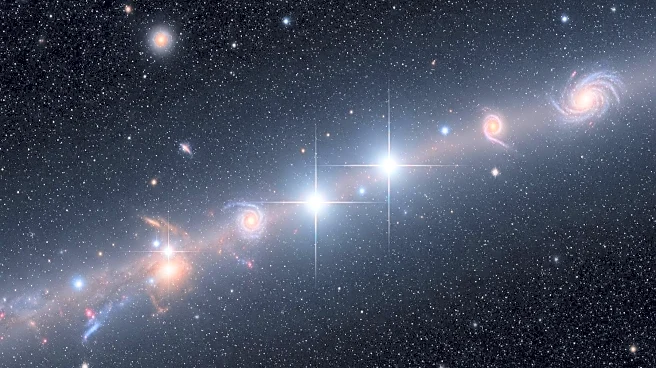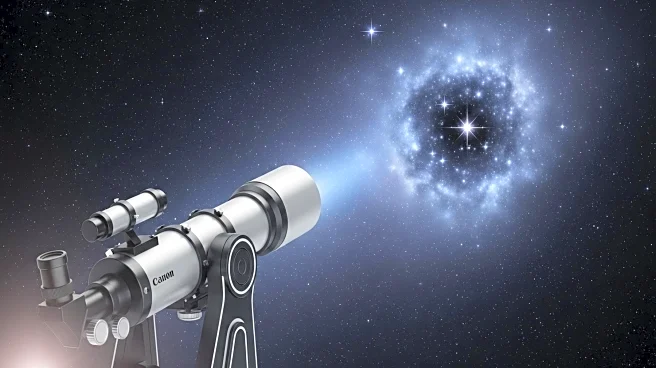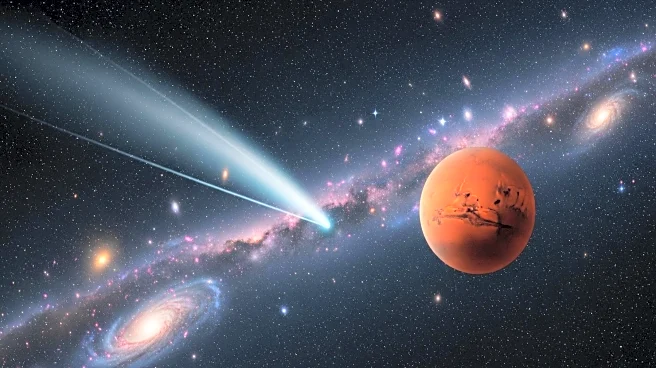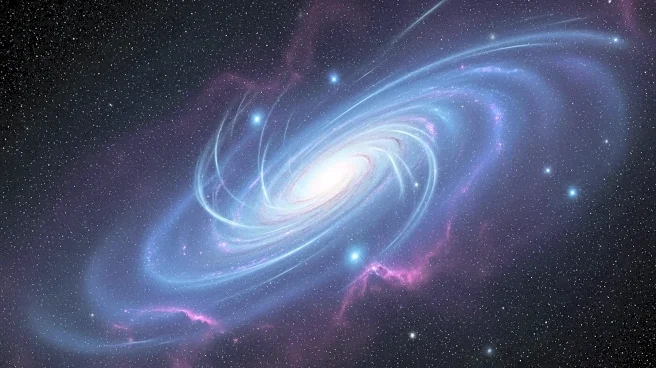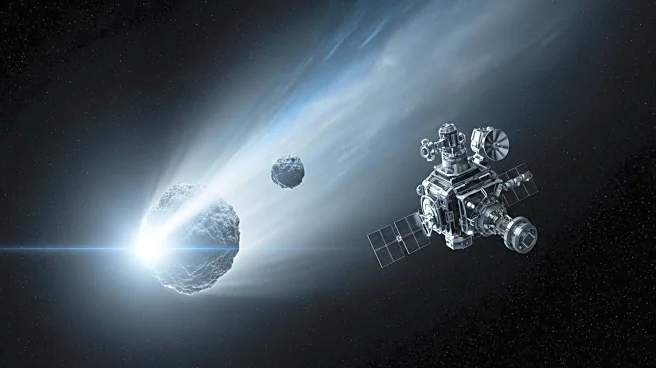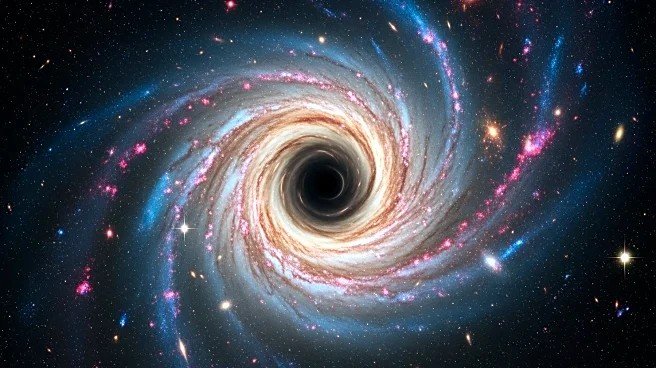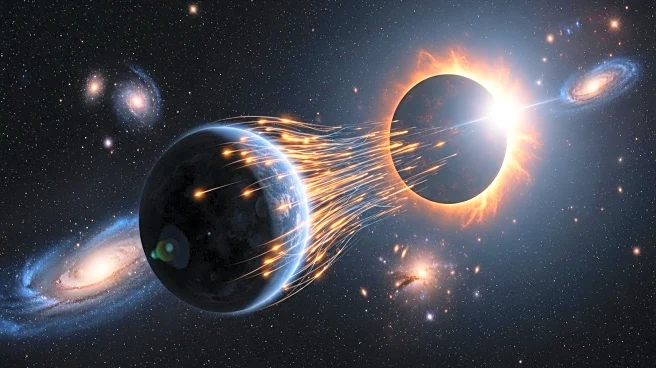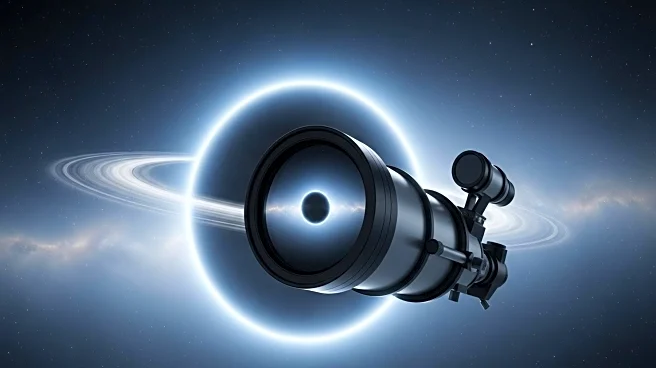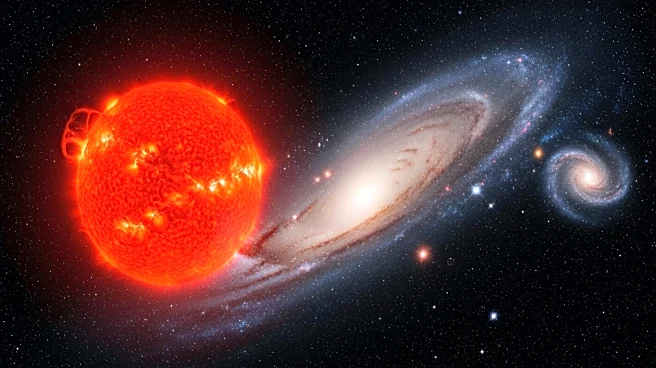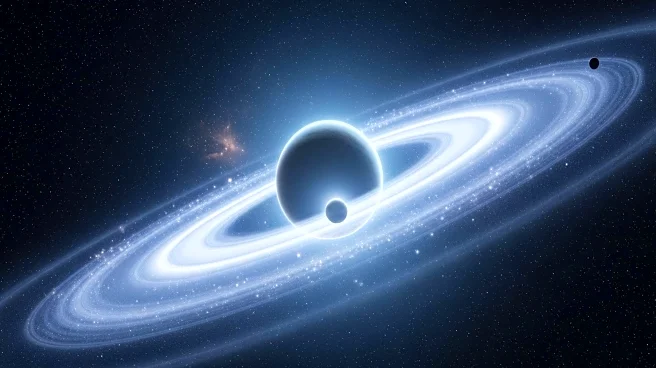What is the story about?
What's Happening?
Researchers from Carnegie Mellon University have confirmed the existence of a companion star to Betelgeuse, a massive supergiant star marking Orion's shoulder. This discovery was made possible through observations using NASA's Chandra X-ray Observatory and the Hubble Space Telescope. The companion, nicknamed 'Betelbuddy,' was detected during a critical observational window when it reached its maximum separation from Betelgeuse. Despite the challenge posed by Betelgeuse's immense brightness, the team successfully identified the companion as a young stellar object roughly the size of our Sun, rather than a compact object like a neutron star or white dwarf. This finding provides observational support for theories explaining Betelgeuse's six-year cycle of brightening and dimming, suggesting that the companion clears away light-blocking dust.
Why It's Important?
The confirmation of Betelgeuse's companion star has significant implications for the understanding of binary star systems. Typically, binary stars form with similar masses, but Betelgeuse and its companion exhibit a massive mass ratio, with Betelgeuse being 16 or 17 solar masses and its companion barely reaching one solar mass. This challenges existing models of binary star formation and opens up new possibilities for studying extreme mass ratio binaries, which are difficult to detect. The discovery also enhances the understanding of Betelgeuse's brightness variations, potentially impacting theories related to stellar evolution and behavior.
What's Next?
The discovery of Betelgeuse's companion star may lead to further research into extreme mass ratio binaries, potentially revising current models of binary star formation. Researchers may continue to observe Betelgeuse and its companion to gather more data on their interactions and effects on each other. This could involve securing additional observational time on powerful telescopes to study the dynamics of the system and its impact on Betelgeuse's brightness cycle. The findings may also prompt discussions within the scientific community about the implications for stellar evolution theories.
Beyond the Headlines
The discovery of Betelgeuse's companion star highlights the importance of collaboration and spontaneous scientific inquiry. The idea to propose for observing time arose from a casual conversation at the McWilliams Center for Cosmology, demonstrating how informal discussions can lead to significant scientific breakthroughs. Additionally, the findings challenge existing binary star formation models, suggesting that there may be more diversity in binary systems than previously thought. This could lead to a reevaluation of how binary stars are formed and evolve over time.
AI Generated Content
Do you find this article useful?
